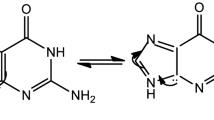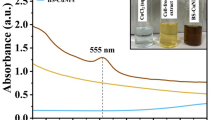Summary
The first non-metallic oxygen carrier, tetrachlorodecaoxide (TCDO), showedin vitro antibacterial activity among aerobic and anaerobic bacteria. The lethal dose forEscherichia coli, for example, was 150 µg/ml whereas 15 µg/ml reduced the bacterial amount after a latent period of two hours, but regrowth started after four hours. The bactericidal effect of TCDO, however, was dose-dependent and species-specific. This suggests that some aerobic bacterial species might not be able to produce sufficient amounts of protecting enzymes like catalase or superoxide dismutase. The computer controlled measurement of chemiluminescence was used as a model for the phagocytic activity. With isolated human granulocytes and opsonized zymosan as antigen no increase in peak counts per minute was observed compared with controls without TCDO. However, with human whole blood, positive effects were seen using TCDO together with zymosan as well as specific and non-specific opsonizedKlebsiella pneumoniae K 17. It seems that whole blood possesses additional, but as yet unknown biocatalysers to split TCDO into oxygen and chloride.
Zusammenfassung
Der erste nicht-metallische Sauerstoffträger, Tetrachlordecaoxid (TCDO) zeigtein vitro antibakterielle Aktivität gegenüber aeroben und anaeroben Mikro-organismen. Eine komplette Bakterizidie stellte sich beispielsweise gegenüberEscherichia coli bei einer Dosis von 150 µg/ml ein, während sich bei Gabe von 15 µg/ml die Bakterienmasse nach einer Latenzzeit von zwei Stunden erheblich reduzierte, ein Wiederauswachsen der Kulturen erfolgte nach vier Stunden. Die bakterizide Wirkung von TCDO war dosisabhängig und Spezies-spezifisch. Dies läßt die Vermutung zu, daß einige aerobe Bakterienarten nicht in der Lage sind, eine ausreichende Menge schützender Enzyme zu bilden, wie Katalase oder Superoxiddismutase. Die rechnergesteuerte Messung der Chemilumineszenz wurde als Modell für die Phagozytoseleistung herangezogen. Mit isolierten menschlichen Granulozyten und opsoniertem Zymosan als Antigen wurde keine Erhöhung der Impulsraten registriert im Vergleich zu Kontrollen ohne TCDO. Mit menschlichem Vollblut jedoch und Zymosan als Antigen oder spezifisch und nicht-spezifisch opsoniertenKlebsiella pneumoniae K 17 wurde eine zum Teil erhebliche Steigerung der Impulsrate beobachtet. Es ist daher wahrscheinlich, daß Vollblut noch nicht näher bekannte Biokatalysatoren besitzt, die TCDO in Sauerstoff und Chlorid spalten.
Similar content being viewed by others
Literature
Irvin, T. T., Norman, J. N., Suwanagul, A., Smith, G. Hyperbaric oxygen in the treatment of infections by aerobic microorganisms. Lancet I (1966) 392–394.
Hunt, T. K., Linsey, M., Grilis, G., Sonne, M., Jawetz, E. The effect of differing ambient oxygen tensions on wound infection. Ann. Surgery 181 (1975) 35–39.
Bulkley, G. B. The role of oxygen free radicals in human disease processes. Surgery 94 (1983) 407–411.
Elsbach, P., Weiss, J. A reevaluation of the roles of the O2-dependent O2-independent microbicidal system of phagocytes. Rev. Infect. Dis. 5 (1983) 843–853.
Elstner, E. F.: Untersuchungen zum molekularen Mechanismus der peripheren Sauerstoffversorgung und der antimikrobiellen Wirkung von Oxoferin. (Submitted for publication).
Youngman, R. J., Wagner, G., Kühne, F. W., Elstner, E. F.: Untersuchungen zum molekularen Mechanismus der peripheren Sauerstoffversorgung und der antimikrobiellen Wirkung von Oxoferin. (Submitted for publication).
Elstner, E. F., Leuschner, F., Lindner, E., Müller-Wiefel, H.: Collection of the expert opinions and investigations for the registration of tetrachlorodecaoxide. Submitted to the Bundesgesundheitsamt Berlin, FRG, 1982, 1983.
Kühne, F. W., Schröder, D., Thiede, A., Kühne, H., Seifert, J.: Ein neues biochemisches Prinzip zur Erhöhung des Sauerstoffpartialdruckes im Blut. 101. Chirurgenkongreß München, 1984 (oral presentation).
Ullmann, U. Antibacterial activity of ticarcillin, tobramycin and gentamicin alone and in combination againstPseudomonas aeruginosa in vitro. Chemotherapy 23 (1977) 314–323.
Klebanoff, S. J. Myeloperoxidase-mediated cytotoxic systems. In:A. J. Sbarra, R. R. Strauss (eds.): The reticuloendothelial system. A comprehensive treatise. Vol. II. Biochemistry and metabolism. Plenum Press, New York 1980, pp. 279–308.
Klebanoff, S. J., Rosen, H. The role of myeloperoxidase in the microbicidal activity of polymorphonuclear leukocytes, oxygen free radicals and tissue damage. Ciba Foundation Symposium 65 (new series), Experta Medica, New York 1979, pp. 263–284.
Author information
Authors and Affiliations
Rights and permissions
About this article
Cite this article
Ullmann, U., Kühne, F.W. In vitro investigations on the antibacterial action and the influence on the phagocytic chemiluminescence of tetrachlorodecaoxide — A new, non-metallic oxygen complex. Infection 13 (Suppl 2), S236–S240 (1985). https://doi.org/10.1007/BF01644437
Issue Date:
DOI: https://doi.org/10.1007/BF01644437




